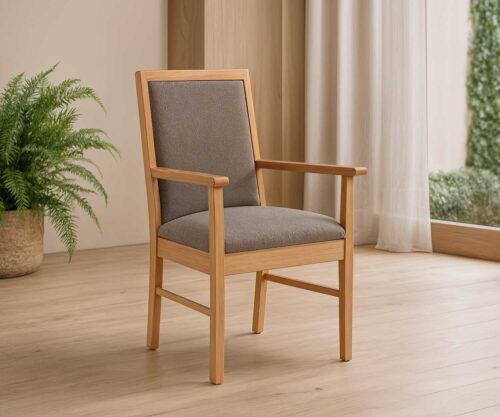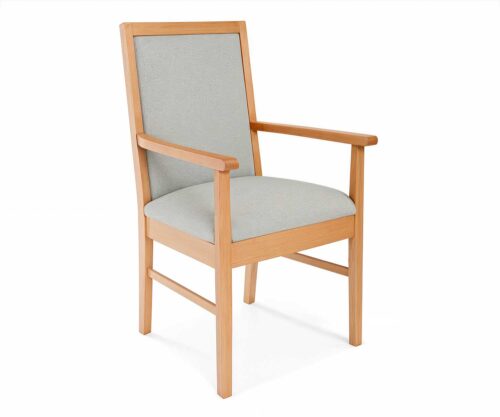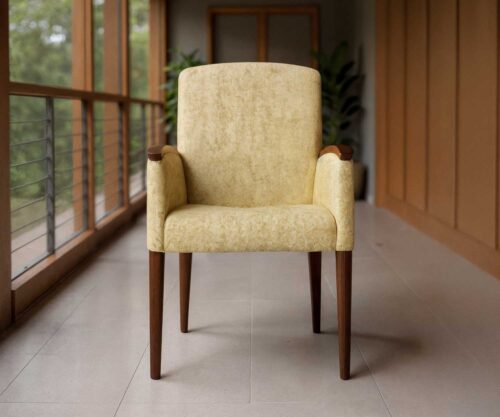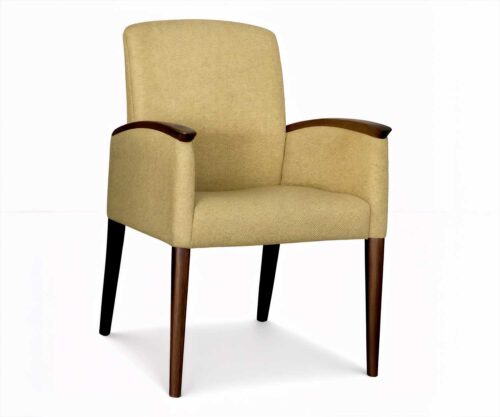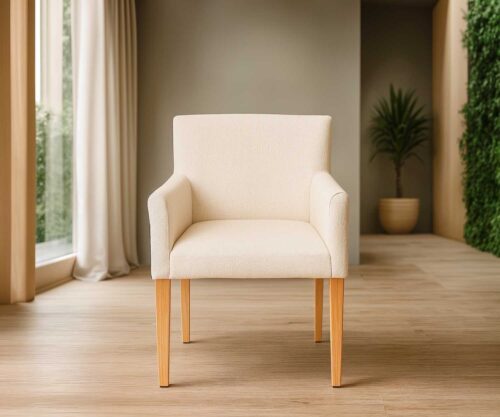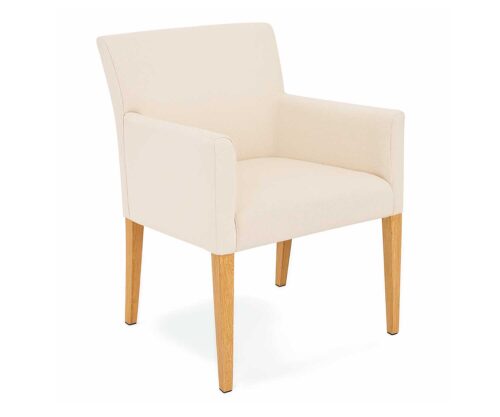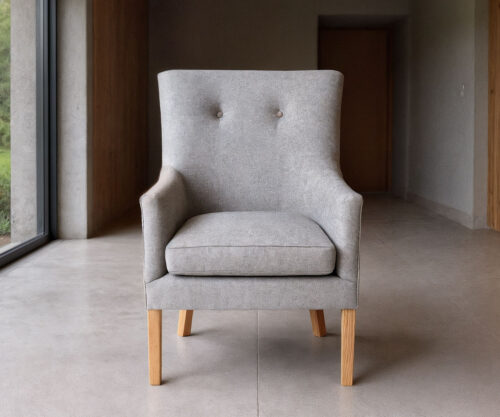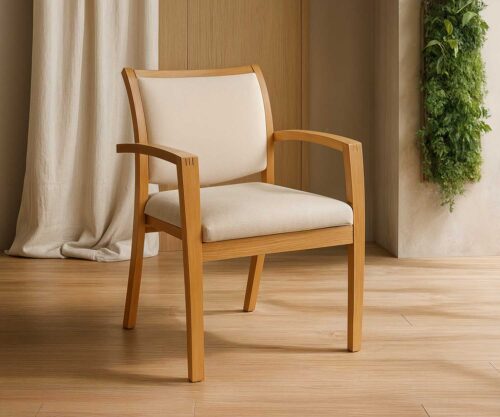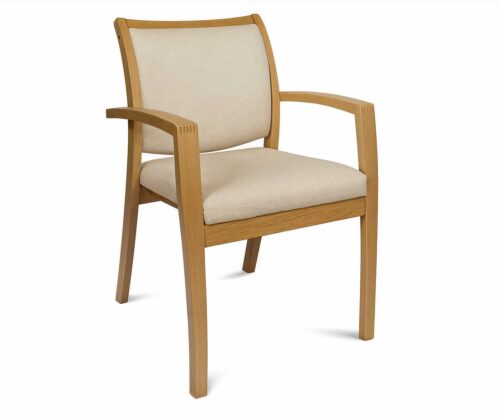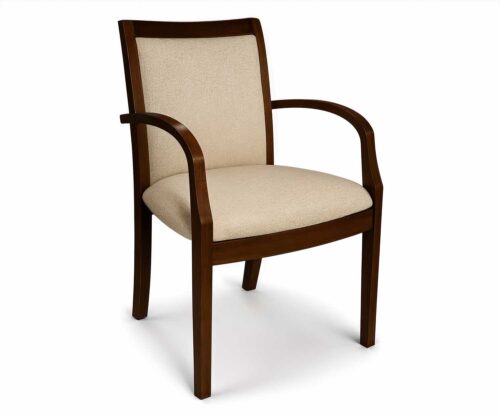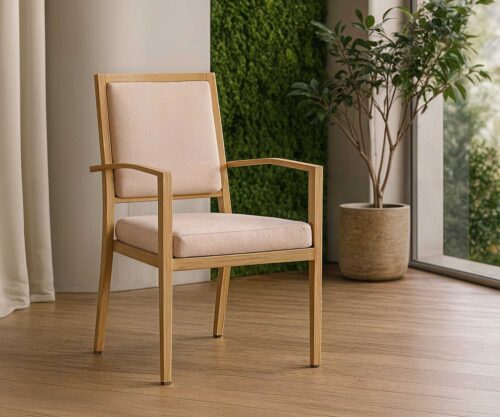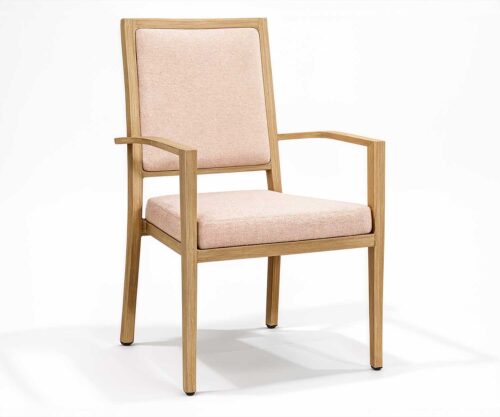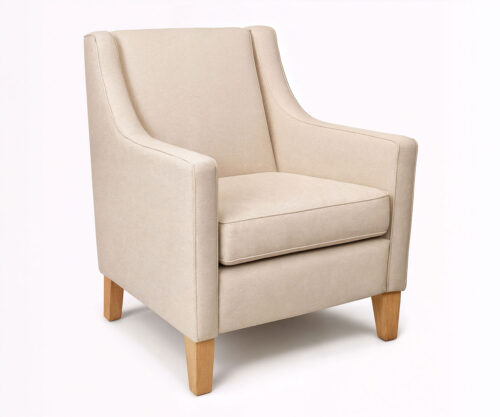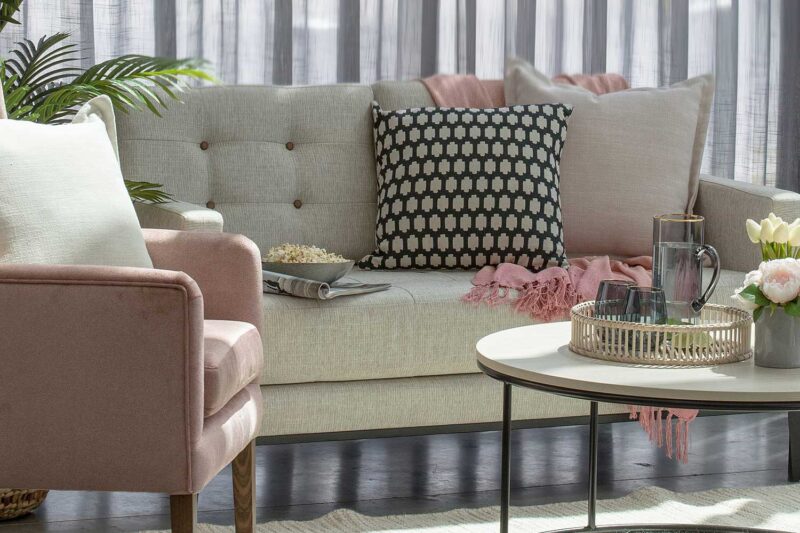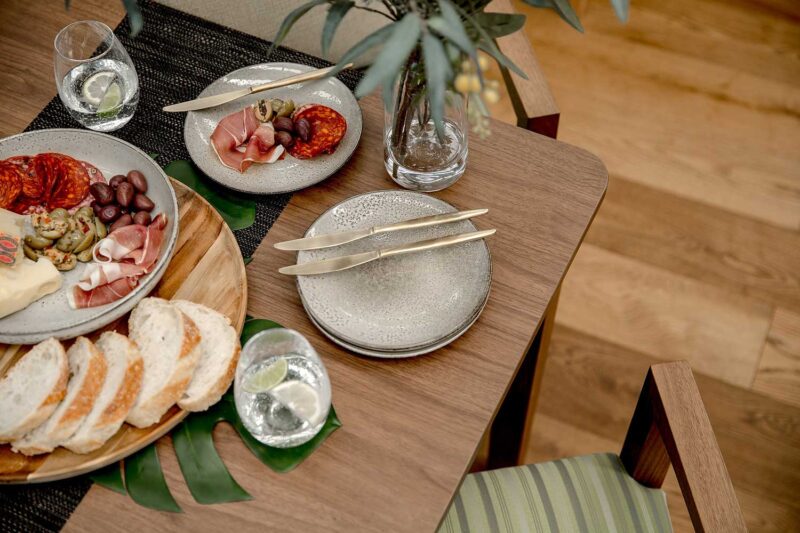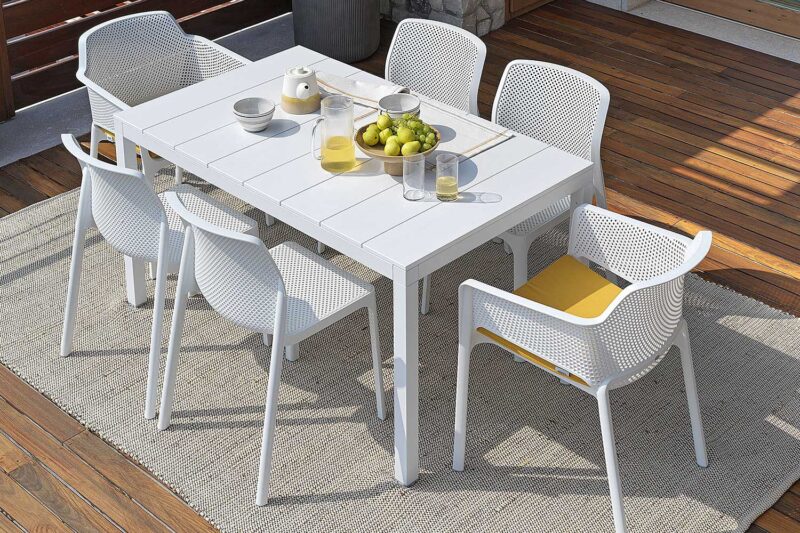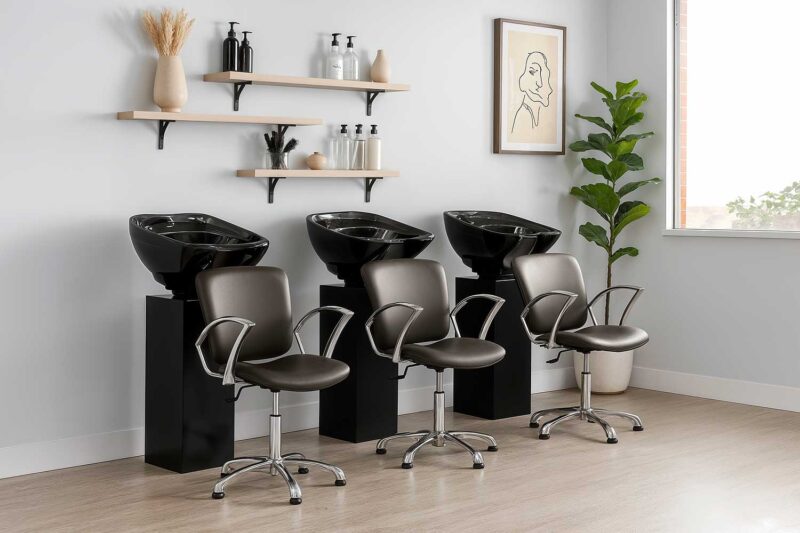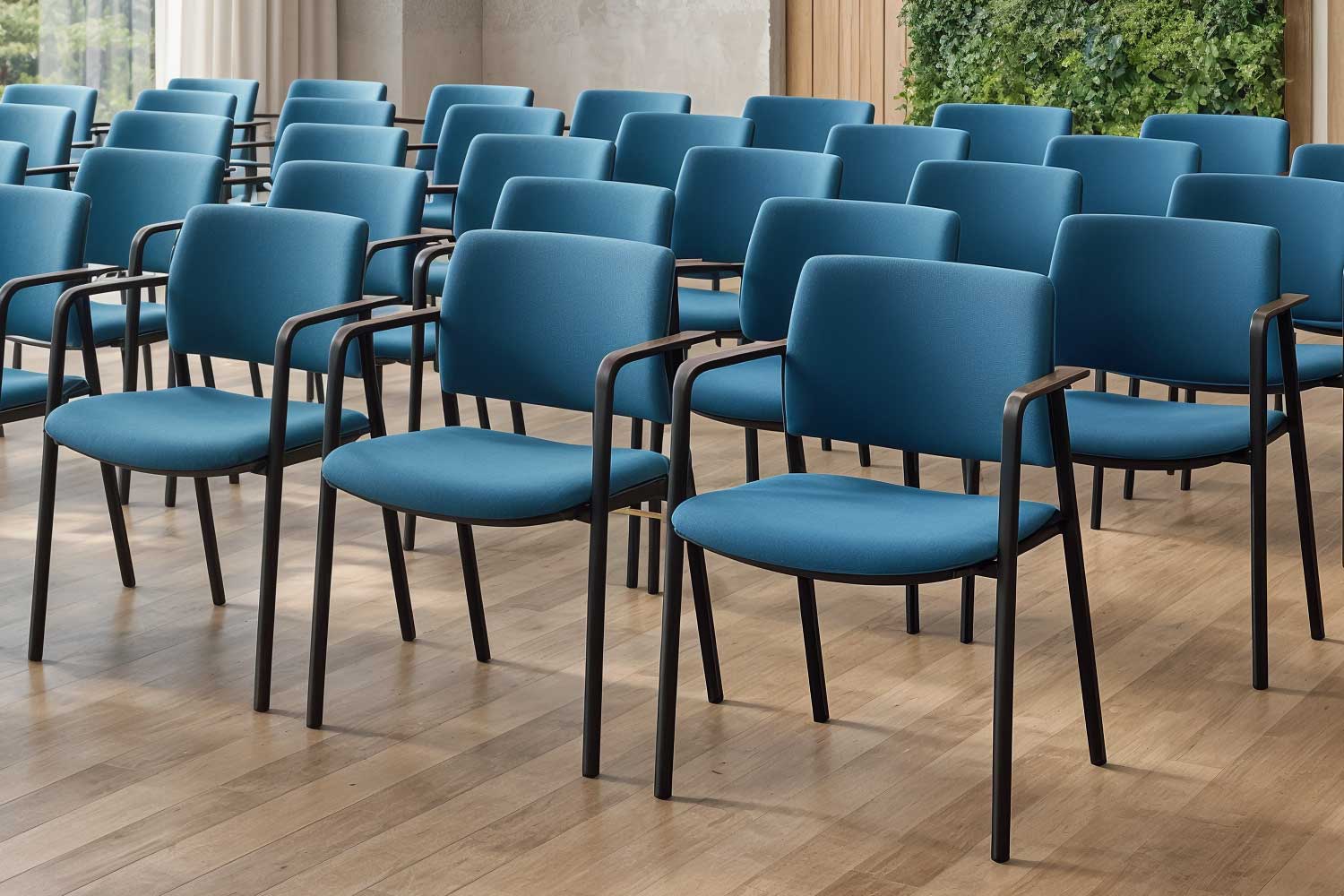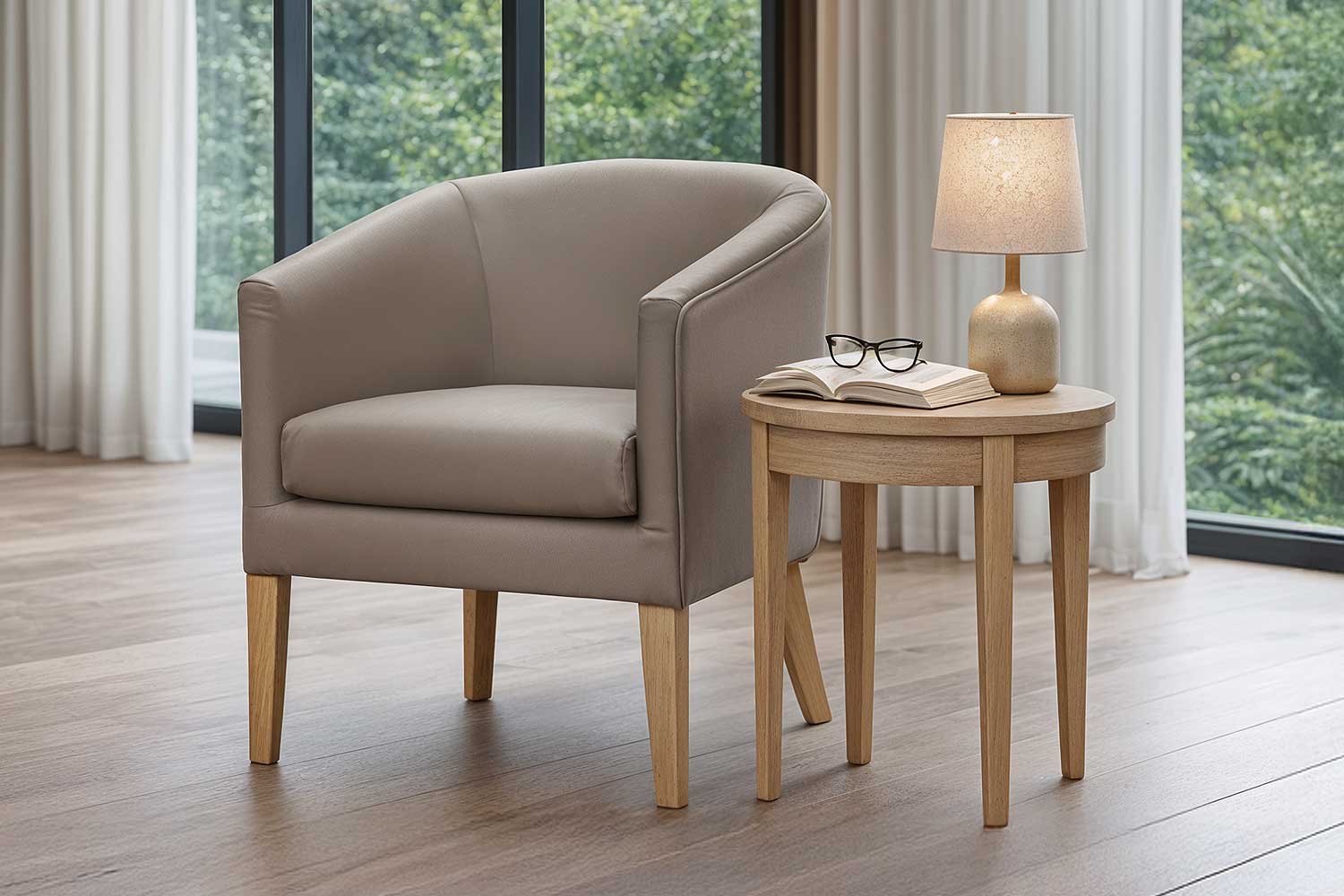How to Choose the Right Furniture for New Aged Care Wings
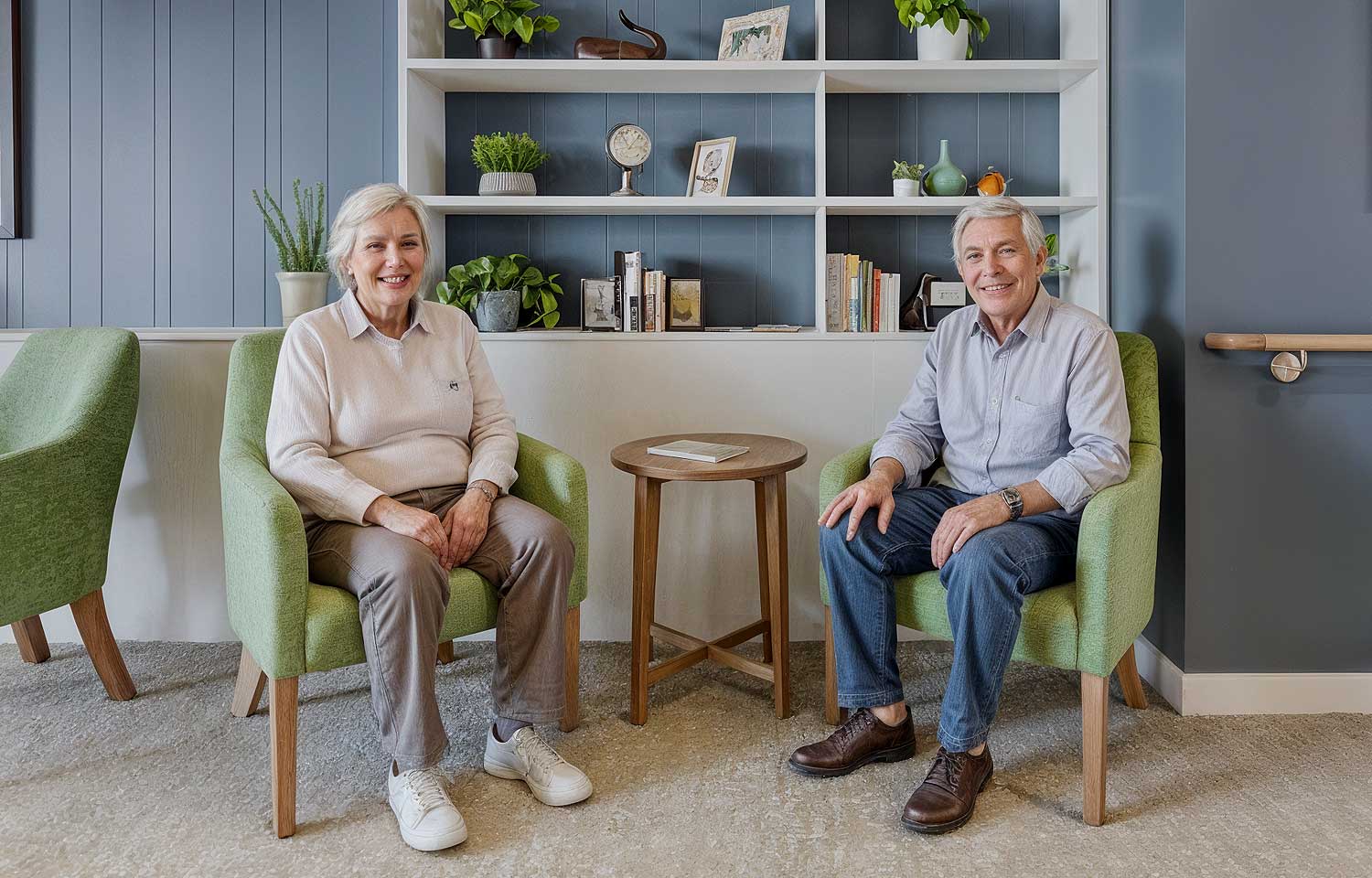
What facility managers, designers, and operators need to know
Furnishing a new wing in an aged care facility is about much more than just filling rooms—it’s about creating safe, comfortable, and homelike environments that support residents’ physical and emotional wellbeing. With increasing emphasis on person-centred care, selecting the right furniture is one of the most impactful decisions you’ll make during a build or extension.
Here’s a practical guide to help you choose aged care furniture that works for residents, staff, and your facility long term.
1. Prioritise Comfort with Support
Comfort is essential—but so is postural support and ease of use. According to research published in the Journal of Aging and Health, older adults benefit most from seating that supports upright posture, has sturdy arms to assist with standing, and has the right seat height to avoid strain on the knees.
Tips:
-
Choose armchairs with firm, supportive cushioning that doesn’t sag over time.
-
Look for chairs with seat heights of around 460–480mm for most residents.
-
Test options with your physiotherapist or OT team if possible.
-
Wingback chairs like the Milson Wingback offer neck and upper back support, helping residents stay seated comfortably longer.
2. Match Design with Practical Functionality
Aesthetic design matters—especially when trying to create non-institutional environments that feel like home. But furniture also needs to be functional and safe for aged care use.
Tips:
-
Avoid overly soft or deep seating—residents may struggle to get in and out.
-
Use rounded edges and smooth surfaces to reduce injury risk.
-
Choose upholstery with patterned or textured fabric to disguise minor stains, but avoid high-gloss finishes that can appear slippery or cold.
-
Consider integrated features like inbuilt handles for easy movement by staff.
3. Choose Upholstery That Balances Comfort and Infection Control
Your fabrics and finishes must meet the dual demands of cleanability and resident comfort.
Tips:
-
Use commercial-grade fabrics that are antimicrobial and easy to wipe clean.
-
Consider moisture-resistant materials that still feel soft to the touch.
-
Vinyls and healthcare-specific fabrics like Crypton or EnviroLeather are popular for high-use areas.
-
For resident rooms, consider using fabric on chair backs and seats, and vinyl on armrests for a warm yet hygienic finish.
4. Think Ahead About Mobility and Transfer Support
Many residents will need assistance moving between a chair and a walker or wheelchair. Furniture should support safe transfers and reduce manual handling for staff.
Tips:
-
Choose chairs with sturdy arms that residents can push down on to stand.
-
Avoid furniture that’s too heavy to move easily—or too light to stay stable when leaned on.
-
Add glides or low-profile castors to help staff reposition furniture easily.
-
Avoid low coffee tables in high-traffic areas—they can become trip hazards.
5. Select Furniture That Supports Social Connection
Furniture can actively support wellbeing by encouraging social interaction.
Tips:
-
Use group seating layouts in lounges to encourage conversation.
-
Include a mix of single, double, and group seating to cater to different social preferences.
-
Add small side tables for cups of tea or personal items—especially for residents who like to sit alone but still be part of the room.
6. Don’t Forget Outdoor Spaces
Access to fresh air and sunlight is linked to improved mood and reduced agitation in aged care residents (Dementia Australia, 2022). Outdoor furniture should be safe, durable, and comfortable.
Tips:
-
Choose UV-stabilised, rust-resistant materials.
-
Use outdoor seat cushions with quick-dry foam and removable covers.
-
Provide plenty of shaded seating for hot days and some low-maintenance greenery.
7. Consider Your Existing Aesthetic (When It Makes Sense)
If you’re extending an existing aged care facility, aim to complement the current interior style, especially in communal areas where residents move between old and new wings. Continuity in finishes, colours, and design details helps create a sense of familiarity and cohesion.
Tips:
-
Choose fabrics and timber stains that match or harmonise with your existing palette.
-
Reuse existing furniture where appropriate and pair it with new complementary pieces.
-
Speak with your interior designer or supplier about balancing design continuity with the opportunity to introduce gentle updates.
8. Ask Your Residents: What Do They Want?
Involving residents in the furniture selection process can lead to better outcomes—and better buy-in. Residents often know exactly what helps them feel at home and comfortable.
Tips:
-
Conduct a simple survey or informal chat to learn what styles, colours or furniture types residents prefer.
-
Ask about favourite spots to sit and why—this can reveal valuable insights about comfort, lighting, or placement.
-
If possible, create a “test zone” where residents can trial chair options and provide feedback.
-
Involving residents fosters a sense of ownership and shows your commitment to person-centred care.
9. Work with a Supplier That Understands Aged Care
Furniture for aged care isn’t just commercial-grade—it needs to meet the specific needs of older people, and suit your facility’s care model and budget. Working with a local manufacturer means you can have more control over lead times, customisation, and quality.
FAQs: Choosing Aged Care Furniture
Q: How many pieces of furniture should I allow per resident room?
A: Most resident rooms include a bed, bedside table, armchair, wardrobe, and often a small writing desk. A comfortable armchair is key—it encourages residents to spend time out of bed and supports better engagement and posture.
Q: What’s the best seat height for elderly residents?
A: Around 460–480mm is ideal for most aged care residents. Lower seating can cause difficulty with standing and increase the risk of falls.
Q: Should I use recliners in aged care lounges?
A: Recliners can be suitable in quiet rooms or individual settings, but they can take up space and create manual handling issues in shared areas. Select models with braked castors and a manual release lever for safety.
Q: Can I use domestic-style furniture in aged care?
A: Domestic-style design is great—but the furniture must still meet commercial and infection control standards. Work with suppliers who offer homely aesthetics combined with healthcare-grade construction.
Q: How far in advance should I order furniture?
A: Ideally, allow 12–16 weeks for Australian-made, custom furniture. Engage your supplier early, even if construction isn’t complete, so they can manage production around build timelines.
Final Thoughts
The right furniture helps residents feel at home, supports staff in their daily tasks, and reflects the care your facility delivers. By choosing pieces that combine comfort, safety, aesthetics, and durability, you’re setting your new wing up for success.
If you’d like help planning furniture for a new build or refurbishment, FHG’s team of Project Consultants can guide you from concept to installation—with everything manufactured right here in Brisbane. Contact us today.
Custom, Safe and Supportive Furniture for Residential Aged Care
More News
How to Choose the Right Furniture for New Aged Care Wings

What facility managers, designers, and operators need to know
Furnishing a new wing in an aged care facility is about much more than just filling rooms—it’s about creating safe, comfortable, and homelike environments that support residents’ physical and emotional wellbeing. With increasing emphasis on person-centred care, selecting the right furniture is one of the most impactful decisions you’ll make during a build or extension.
Here’s a practical guide to help you choose aged care furniture that works for residents, staff, and your facility long term.
1. Prioritise Comfort with Support
Comfort is essential—but so is postural support and ease of use. According to research published in the Journal of Aging and Health, older adults benefit most from seating that supports upright posture, has sturdy arms to assist with standing, and has the right seat height to avoid strain on the knees.
Tips:
-
Choose armchairs with firm, supportive cushioning that doesn’t sag over time.
-
Look for chairs with seat heights of around 460–480mm for most residents.
-
Test options with your physiotherapist or OT team if possible.
-
Wingback chairs like the Milson Wingback offer neck and upper back support, helping residents stay seated comfortably longer.
2. Match Design with Practical Functionality
Aesthetic design matters—especially when trying to create non-institutional environments that feel like home. But furniture also needs to be functional and safe for aged care use.
Tips:
-
Avoid overly soft or deep seating—residents may struggle to get in and out.
-
Use rounded edges and smooth surfaces to reduce injury risk.
-
Choose upholstery with patterned or textured fabric to disguise minor stains, but avoid high-gloss finishes that can appear slippery or cold.
-
Consider integrated features like inbuilt handles for easy movement by staff.
3. Choose Upholstery That Balances Comfort and Infection Control
Your fabrics and finishes must meet the dual demands of cleanability and resident comfort.
Tips:
-
Use commercial-grade fabrics that are antimicrobial and easy to wipe clean.
-
Consider moisture-resistant materials that still feel soft to the touch.
-
Vinyls and healthcare-specific fabrics like Crypton or EnviroLeather are popular for high-use areas.
-
For resident rooms, consider using fabric on chair backs and seats, and vinyl on armrests for a warm yet hygienic finish.
4. Think Ahead About Mobility and Transfer Support
Many residents will need assistance moving between a chair and a walker or wheelchair. Furniture should support safe transfers and reduce manual handling for staff.
Tips:
-
Choose chairs with sturdy arms that residents can push down on to stand.
-
Avoid furniture that’s too heavy to move easily—or too light to stay stable when leaned on.
-
Add glides or low-profile castors to help staff reposition furniture easily.
-
Avoid low coffee tables in high-traffic areas—they can become trip hazards.
5. Select Furniture That Supports Social Connection
Furniture can actively support wellbeing by encouraging social interaction.
Tips:
-
Use group seating layouts in lounges to encourage conversation.
-
Include a mix of single, double, and group seating to cater to different social preferences.
-
Add small side tables for cups of tea or personal items—especially for residents who like to sit alone but still be part of the room.
6. Don’t Forget Outdoor Spaces
Access to fresh air and sunlight is linked to improved mood and reduced agitation in aged care residents (Dementia Australia, 2022). Outdoor furniture should be safe, durable, and comfortable.
Tips:
-
Choose UV-stabilised, rust-resistant materials.
-
Use outdoor seat cushions with quick-dry foam and removable covers.
-
Provide plenty of shaded seating for hot days and some low-maintenance greenery.
7. Consider Your Existing Aesthetic (When It Makes Sense)
If you’re extending an existing aged care facility, aim to complement the current interior style, especially in communal areas where residents move between old and new wings. Continuity in finishes, colours, and design details helps create a sense of familiarity and cohesion.
Tips:
-
Choose fabrics and timber stains that match or harmonise with your existing palette.
-
Reuse existing furniture where appropriate and pair it with new complementary pieces.
-
Speak with your interior designer or supplier about balancing design continuity with the opportunity to introduce gentle updates.
8. Ask Your Residents: What Do They Want?
Involving residents in the furniture selection process can lead to better outcomes—and better buy-in. Residents often know exactly what helps them feel at home and comfortable.
Tips:
-
Conduct a simple survey or informal chat to learn what styles, colours or furniture types residents prefer.
-
Ask about favourite spots to sit and why—this can reveal valuable insights about comfort, lighting, or placement.
-
If possible, create a “test zone” where residents can trial chair options and provide feedback.
-
Involving residents fosters a sense of ownership and shows your commitment to person-centred care.
9. Work with a Supplier That Understands Aged Care
Furniture for aged care isn’t just commercial-grade—it needs to meet the specific needs of older people, and suit your facility’s care model and budget. Working with a local manufacturer means you can have more control over lead times, customisation, and quality.
FAQs: Choosing Aged Care Furniture
Q: How many pieces of furniture should I allow per resident room?
A: Most resident rooms include a bed, bedside table, armchair, wardrobe, and often a small writing desk. A comfortable armchair is key—it encourages residents to spend time out of bed and supports better engagement and posture.
Q: What’s the best seat height for elderly residents?
A: Around 460–480mm is ideal for most aged care residents. Lower seating can cause difficulty with standing and increase the risk of falls.
Q: Should I use recliners in aged care lounges?
A: Recliners can be suitable in quiet rooms or individual settings, but they can take up space and create manual handling issues in shared areas. Select models with braked castors and a manual release lever for safety.
Q: Can I use domestic-style furniture in aged care?
A: Domestic-style design is great—but the furniture must still meet commercial and infection control standards. Work with suppliers who offer homely aesthetics combined with healthcare-grade construction.
Q: How far in advance should I order furniture?
A: Ideally, allow 12–16 weeks for Australian-made, custom furniture. Engage your supplier early, even if construction isn’t complete, so they can manage production around build timelines.
Final Thoughts
The right furniture helps residents feel at home, supports staff in their daily tasks, and reflects the care your facility delivers. By choosing pieces that combine comfort, safety, aesthetics, and durability, you’re setting your new wing up for success.
If you’d like help planning furniture for a new build or refurbishment, FHG’s team of Project Consultants can guide you from concept to installation—with everything manufactured right here in Brisbane. Contact us today.
Custom, Safe and Supportive Furniture for Residential Aged Care
Discover the FHG Look Book: Your Source of Inspiration for Quality Australian-Made Commercial Furniture
- Quality Craftsmanship: See why we’ve been a trusted partner for over 25 years.
- Local Excellence: Learn how our Brisbane team ensures the highest standards.
- Inspiration and Ideas: Find innovative furniture solutions for any environment.
Don’t miss the opportunity to transform your commercial space with FHG’s expertly crafted furniture. Download the FHG Look Book today and start your journey towards exceptional design and quality.

